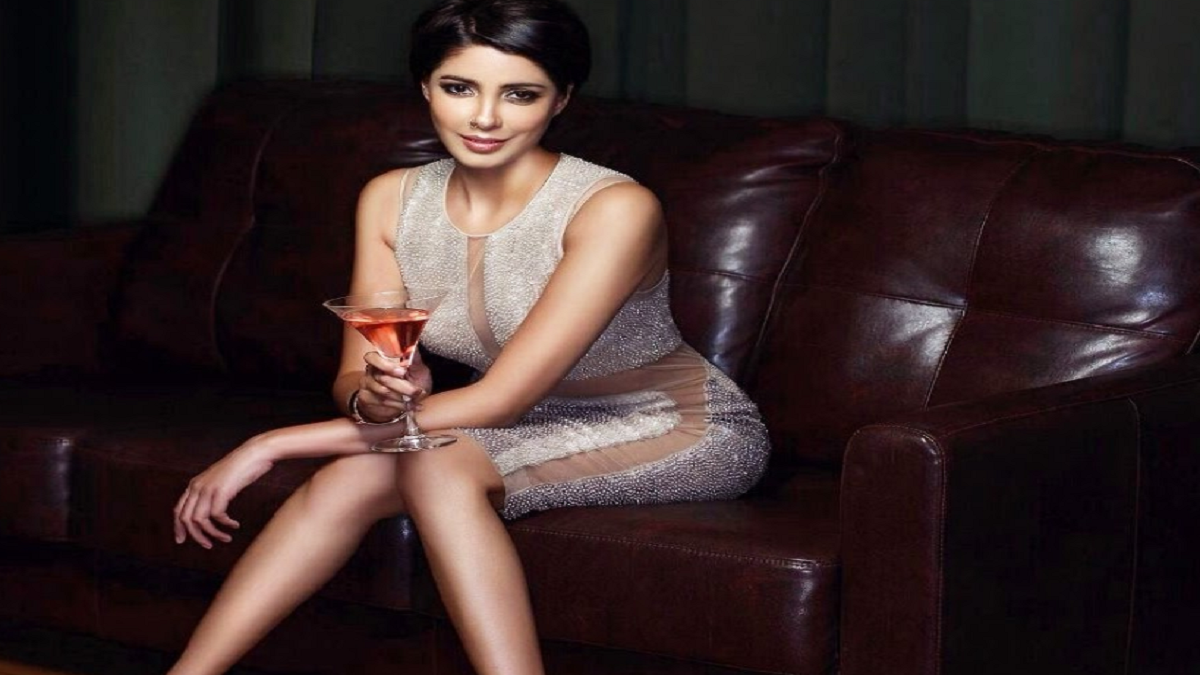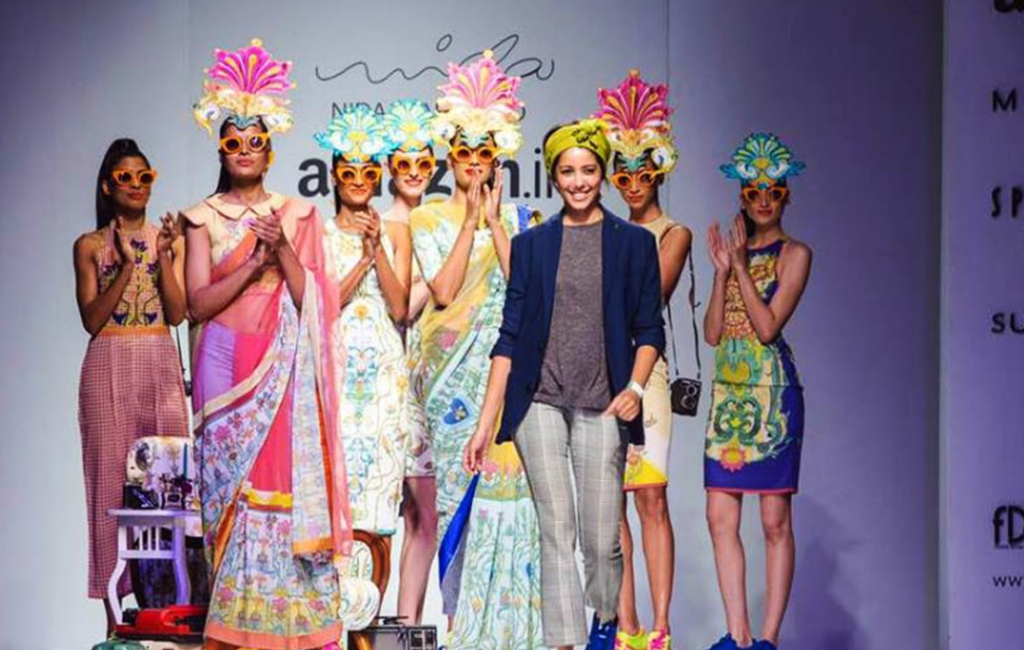


Psychedelic swirls, beholding vibrant palettes devoid of cursive detail, Nida Mahmood, the beatnik flower girl, penultimate with her sustainable apparel, home décor and mood board brand. Pulsating edginess in world fashion, taking experiential economy to a high-end twist, Nida is original. High on Chai, Sadak Chhaap, Maachis, Bioscope and The Great Indian Bohemian Tamasha, her collections identify with Indian kitsch. Pieces from her Maachis series found place in London’s Victoria & Albert Museum for the latter’s India art exhibits. With a first ever showing, ‘Champaa Gali’ from India at Eiffel Tower, Paris, she was awarded for the Most Creative Design Collection. Free spirited, with travel as her way to be, Nida gazes dreamily at the surreal canvas that life offers up.
Dressing up the filmi brat pack like Deepika Padukone, Kajol, Priyanka Chopra, Alia Bhatt, Parineeti Chopra, etc, the design lady focuses on simple silhouettes and technical aspects. Recently, she created an art installation for Absolut, with Kubrick inspired images superimposed from the catwalk and the tailor’s studio. Nida speaks with The Daily Guardian on her specific genre of creativity.

Q. What gives you the ultimate high when conceptualising a design storyboard?
A. I get my high from creating something totally from scratch, that which is out of the ordinary, and only my perspective for the world to view. I so love the fact that we work with ideas that are not really tangible or visible, if you get the drift. My Sapna Cinema collection got inspired by Dreamscapes, and Technicolor dreams. The Adventure of Captain Must! Qalander was my imaginary retrofuturistic flying motorised ant travelling through time and space on his time machine, VDO Gaga. This collection was so metafictional and surrealistic that it broke many conformist boundaries in the design dimensional spheres.
Q. What inspired you to design for Godrej?
A. I had just launched my new line called Goodluck Irani Café when the team from Godrej got in touch with me to design decals for their white goods and interior décor accessories. Godrej fits into the refreshing and cool space that India is in, currently. I recognise this brand from my growing up days as it helps me connect with everyday life.
Q. How do you define kitsch in your world of bohemian fashion?
A. Kitsch is ‘India’ in its people, crows and cows, its nooks and crannies, and idiosyncrasies. It defines anti-fashion, in a cohesive world with diverse ideas to co-exist, with art and design to work as a collaborative medium. I have a special love for it, and with some others in my fraternity that have helped change the definition of Kitsch. It is now the hottest rage for fashion and home décor styling. It has found recognition. Unconventional and alternative fashion is now bang up to date.
Q. As a game changer, doing a limited edition line for Harley Davidson must have been hugely challenging. Do tell us your experience with this.
A. It was a very novel concept for me as I had to explore the world of biking, which I had zero idea about. From start to finish, Harley, the colossus motorbike, a Godzilla on the roads, had me going retro funky painting the murals, designing bike apparel using my mind space, with all its collateral experience with psychedelics. HD the brand is distinctive in its individualistic glory. I had a fantastic time working with them.
Q. What inspired you to start your sustainable clothing design line, ‘Madam Marigold’?
A. Fashion is one of the largest contributing pollutants of the environment and our ecological system. Look at what is happening in the world at the hands of careless humans. It is important to be aware of excessive consumerism and the repercussions that are creating havoc on our planet. This has pushed me towards proactively learning about sustainability in fashion and to bring in practices that help reduce the carbon footprint. For years I have been working on handlooms and Indian crafts, and along the way I have instituted my brand ‘Madam Marigold’. My principles retain the ideology that fashion must be responsible where there is no wastage or uncontrolled buying. As an eco-activist and a responsible member of the fashion fraternity, I am sensitive to defining ethical development in the design processes.
We try to use natural resources as much as possible. We make our dyes from natural materials like onion peels, flower petals, cinnamon, turmeric, tree barks and fruits. The leftover waste from the dye-making process is composted back into the soil. Having seen natural practices at our farm, this came easy to me. Creating natural manure: compost, knowing its importance for plants’ health, working hands-on in our mango orchards enabled me to enjoy gardening. It’s such a joy to provide green solutions with my homegrown terrariums and potted plants. The green shift reflects in my very being and I feel strongly about saving the planet.
Q. Have you been experimenting lately with quirky style storyboards?
A. I recently did a collaboration with Milind Soman, designing an active wear leisure line for Deivee, simply with the intention of getting women to get out of their homes to run. Running, as we know, is a vital part of Milind’s life, and by default he has committed himself to alluring people towards fitness. We came up with the idea of making the “running sari” so that women who don’t feel comfortable wearing fitted lycra leggings and body-hugging sporty tops can also find motivation to get out of their homes and exercise. I had a great time working with him. He is a creative man and I loved his energy. On a fun note, every time he would come to my office, my team would be too star-struck!